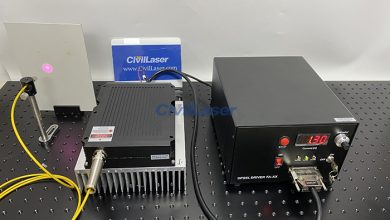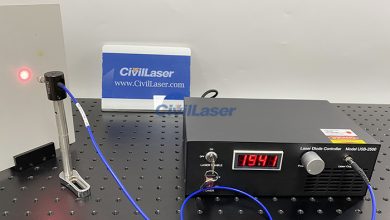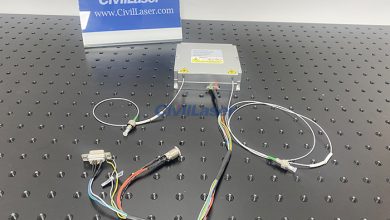Laser NewsLaser Technology
Make Important Progress in Nanolaser Design

Nano lasers have unique properties that are distinct from macro lasers. However, it is almost impossible to determine under what current the output radiation of a nanolaser is coherent; in addition, for practical applications, it is important to distinguish between two states of a nanolaser: a real laser effect with coherent output at high currents and a LED-like state with non-coherent output at low current. Researchers at the Moscow Institute of Physics and Technology have developed a method to determine under what circumstances a nanolaser can be called a real laser.
In the near future, nano lasers will be integrated into integrated optical circuits. In integrated optical circuits, they will be used for a new generation of high-speed interconnects based on photonic waveguides, which will improve the performance of CPUs and GPUs by orders of magnitude. Similarly, the advent of fiber-optic Internet has increased connection speeds and also improved energy efficiency.
So far, this is not the only possible application of nanolasers. Researchers are already developing chemical and biosensors that are only a millionth of a meter in size, while mechanical stress sensors are only a few billionths of a meter smaller. Nano-lasers are also expected to be used to control the activity of neurons in living organisms, including humans.
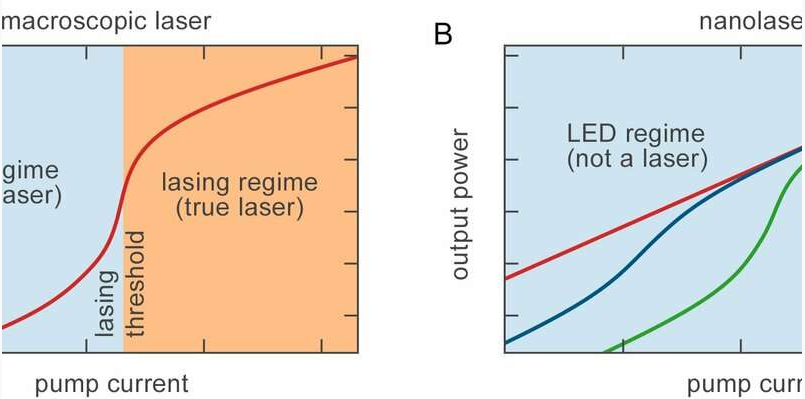
Figure 1. (A) Output power of a conventional macro laser and (B) Dependence of a typical nano-scale laser on pump current at a given temperature.
In order for the radiation source to have the characteristics of a laser, it needs to meet many requirements. The main point is that it must emit coherent radiation. A unique characteristic closely related to coherence is the existence of so-called laser thresholds. When the pump current is below this threshold, the output radiation is mostly spontaneous, and its characteristics are no different from the output of a traditional light emitting diode (LED). But once the threshold current is reached, the radiation becomes coherent. At this point, the emission spectrum of a conventional macro laser is reduced, and its output power is spiked. The latter feature provides a simple way to determine the laser threshold by studying the change in output power with the pump current (Figure A).
Many nano lasers behave like traditional macro lasers, showing threshold currents. However, for some devices, the laser threshold cannot be determined by analyzing the output power vs. pump current curve, because it has no special characteristics, just a straight line on a logarithmic scale (above Figure B). Such nanolasers are called “thresholdless lasers”, which raises the question: at what current do their radiation become coherent, or like a laser?
The obvious way to answer this question is to measure coherence. However, unlike emission spectra and output power, it is difficult to measure coherence in the case of nanolasers, as this requires equipment capable of recording intensity fluctuations in trillionths of a second, which is the time scale in which internal processes occur in nanolasers.
Andrey Vishnivi and Dmitry Fediainen of the Moscow Institute of Physics and Technology have discovered a way to bypass technically challenging direct coherent measurements. They developed a method to quantify the coherence of nano-laser radiation using the main laser parameters. The researchers claim that their technology can determine the threshold current of any nanolaser (above B). They found that even a “threshold-free” nanolaser actually has a unique threshold current that separates the light-emitting diode from the laser field. The emitted radiation is irrelevant below this threshold current and is coherent above it.
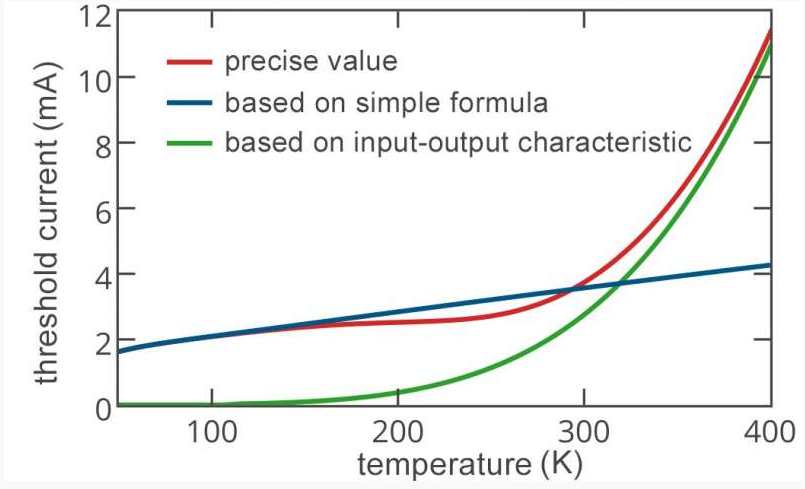
Figure 2. The figure above shows the relationship between the threshold current of the nano-laser and the device temperature.
Surprisingly, the threshold current of the nano laser has nothing to do with the reduction of the output characteristics or emission spectrum, which is a sign of the laser threshold in the macro laser. Figure 1b clearly shows that even if a significant point is seen in the output characteristics, the transition to the laser state occurs at higher currents. This is unpredictable for laser scientists from nanolasers.
“Our calculation table, in most of the papers on nanolaser, the working machine of the laser is not implemented. Although there are studies to measure at the kink point of the output characteristics, nanolaser emission is irrelevant because of the actual laser threshold It is an order of magnitude above the kink value, “Fediafinen added.” Usually, it is difficult to achieve coherent output due to the self-heating of the nanolaser. ”
Therefore, it is important to distinguish the illusion laser threshold from the actual laser threshold. Although coherent measurements and calculations are difficult, Vishnevich and Fediainen have proposed a simple formula that can be applied to any nanolaser. Using this formula and output characteristics, nanolaser engineers can now quickly measure the threshold current of structures they have created (see Figure 2).
The results reported by Jävšnievich and Fedyanin can predict the radiation point of a nanolaser in advance, regardless of how the design is consistent. This will enable engineers to develop nano lasers with predetermined characteristics and guaranteed coherence.
